California hazel (Corylus cornuta subsp. californica)
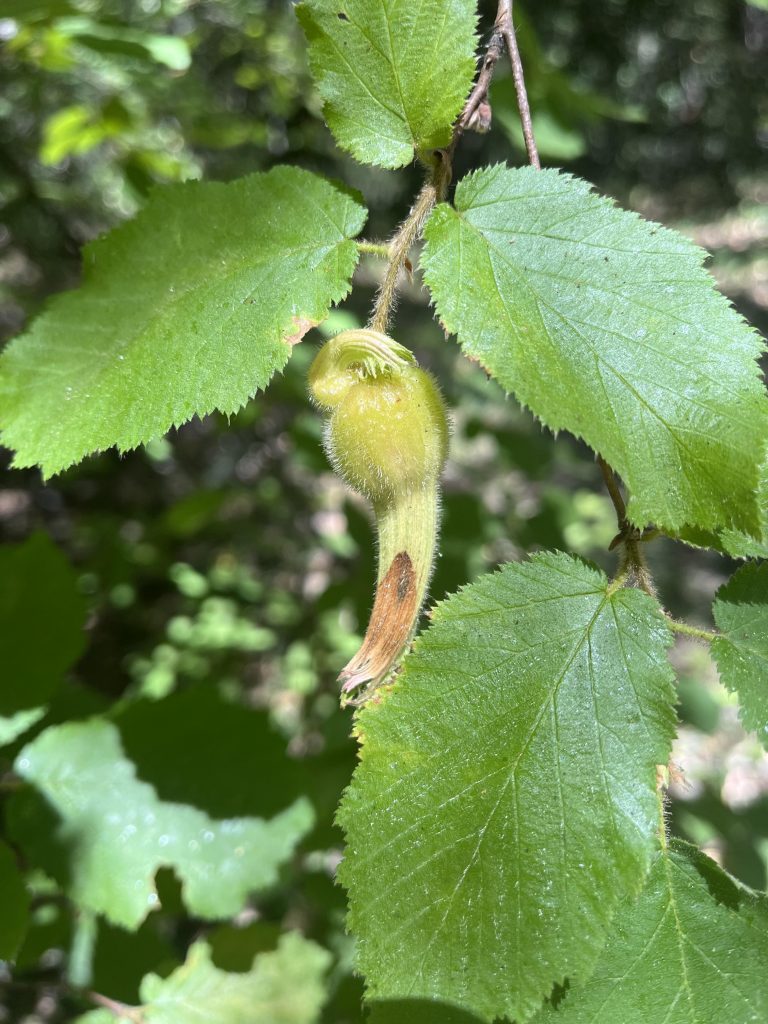
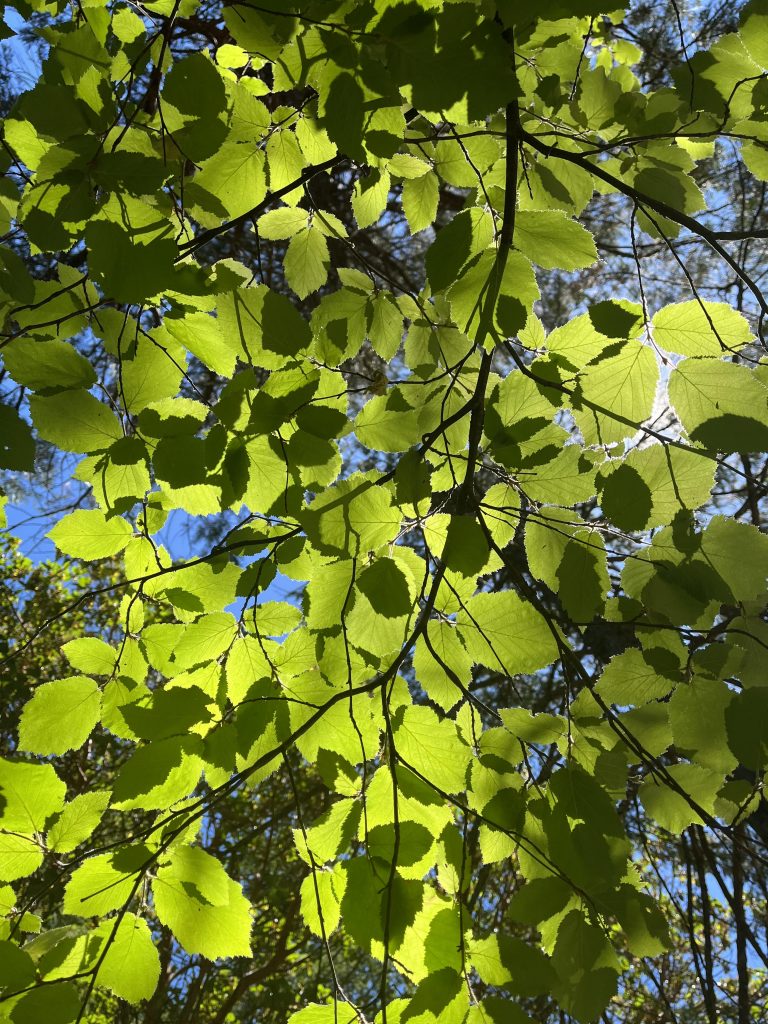
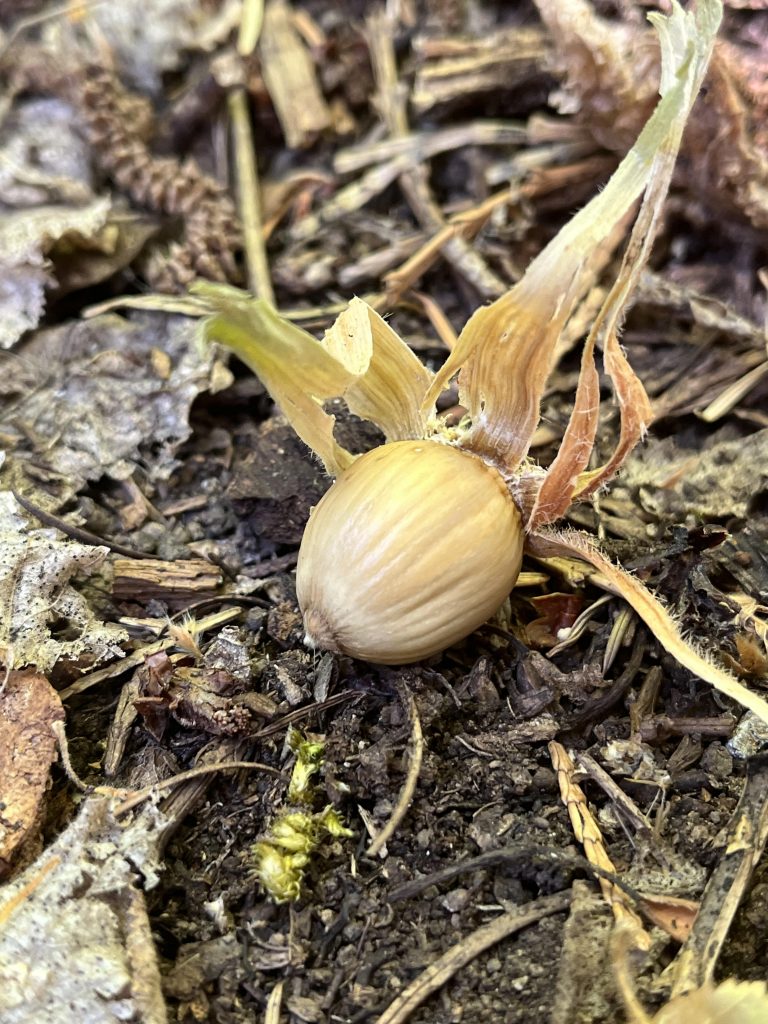
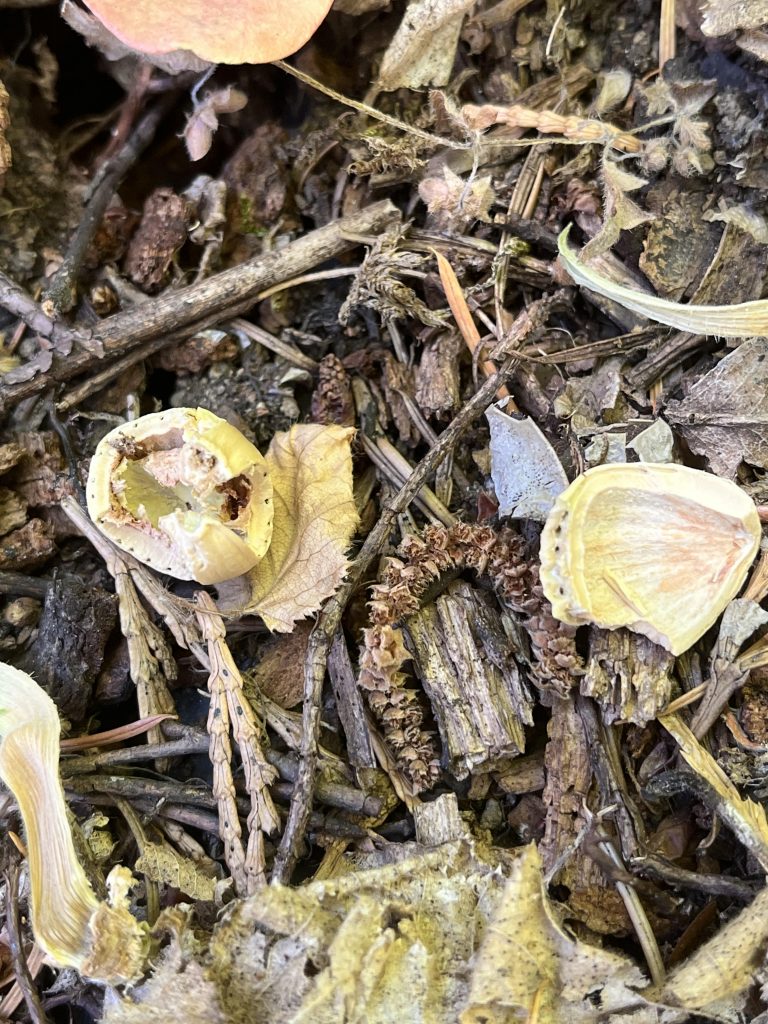
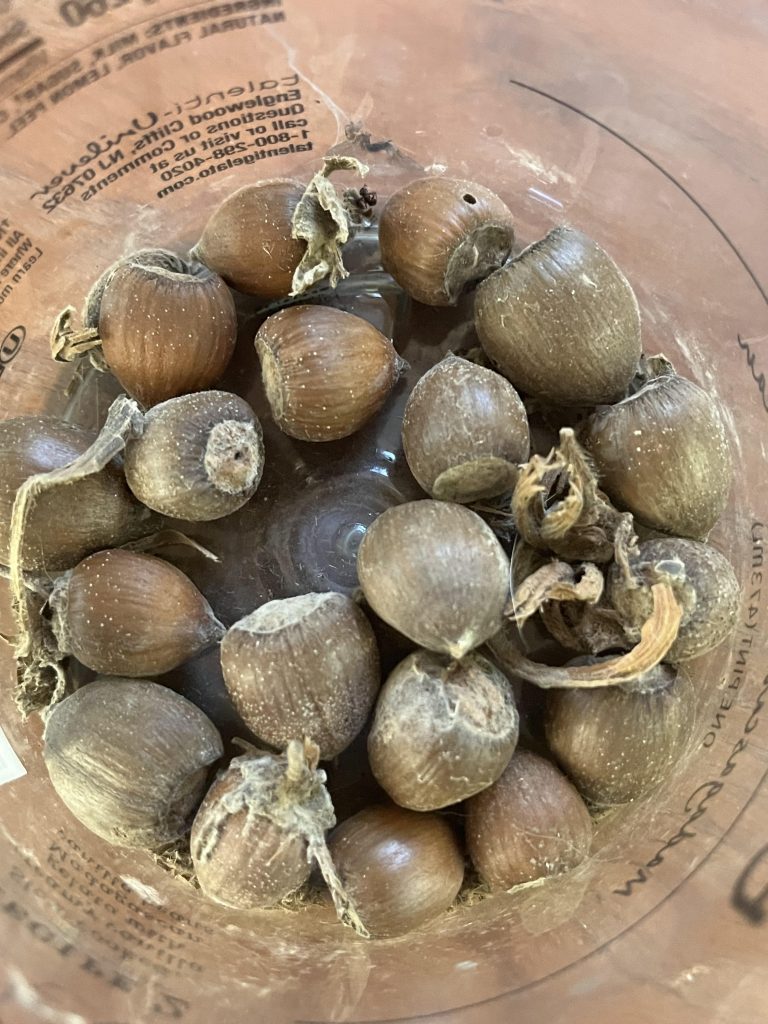
California hazel is a native shrub that grows in the moist shade of forest understory and riparian areas. The leaves are soft and fuzzy, and fall off during the winter (deciduous). During the winter months, the plants produce male flowers, called catkins, along with quaint red female flowers on the same plant. Once pollinated, the female flowers will very slowly develop into a pair of seeds. The seed husks are extremely bristly (like fiberglass) and have long beaks to them, giving this plant one of its common names, “beaked hazelnut”.
Hazelnuts don’t ripen until the later summer/early fall, and often, just one (or none) of each pair will make it all the way to maturity. Hazelnuts are tantalizing food stuffs for an assortment of critters, from insects, to small rodents, to birds, to large mammals. Humans are no exception – native hazelnuts roasted on the woodstove make a delicious winter treat. To harvest, however, we humans have to use our wit to outcompete the hungry critters, who will devotedly devour every hazel in sight if given the opportunity.
The historical relationship between humans and hazels is much more multi-faceted than mere consumption. Native Americans who share a range with this plant, including the Hupa, Yurok, Wintu and Chimiariko tribes have long utilized hazels in basketry and fiber-making. In the Hupa language, there is a different word for each of these applications. K’ila:jonde’ translates to ‘hazel’ or ‘hazelnut’, while tł’ohsch’il’e:n means ‘hazel brush switches’ or ‘hazel bush’. If separated from the plant, a hazel stick itself is referred to as miq’ik’itł’oy’, and the verb for twisting a hazel withe to make it flexible is k’iq’e:n.
California hazels are just one of the important characters that constitute our local flora; healthy ecosystems are comprised of a great diversity of native plant species. Stay tuned to learn more about local native plants and their ecological roles!
Photo top left: A hazelnut growing on the shrub. An unfertilized/undeveloped hazelnut is seen on the left.
Photo top middle: This old, twisted hazel branch would not be suitable for basket making.
Photo top right: An unripe hazelnut has been knocked onto the ground, but amazingly has not been consumed yet.
Photo bottom left: An immature hazelnut that has been foraged by local wildlife.
Photo bottom right: Ripe hazelnuts.
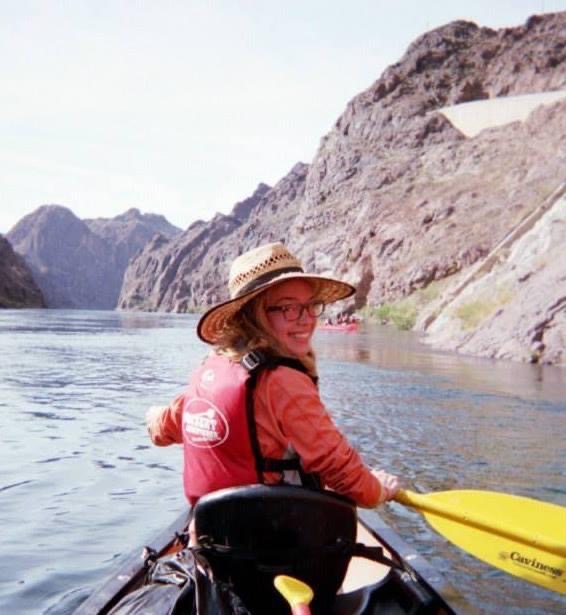
Veronica Yates, Riparian Ecologist
Hoopa Valley Tribal Fisheries Department, Weaverville
